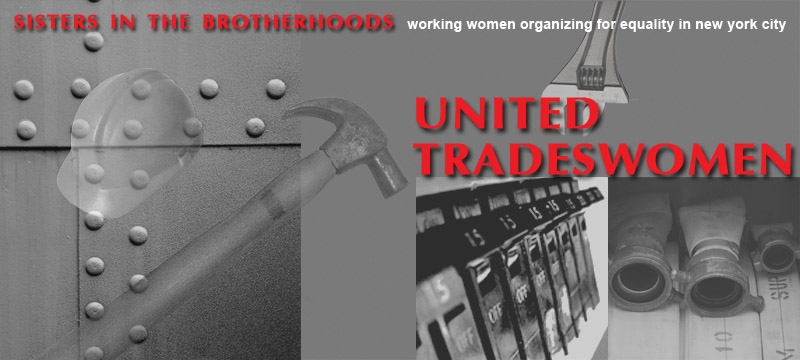 |
||||||
Pots, Pans, and Protest In May 1981 United Tradeswomen launched a successful protest action whose goal was the removal of sexist and racist graffiti at an IBM construction site. UT responded quickly to the situation, sending letters of protest to the principal parties: the contractor (Turner Construction), subcontractor, the union, and the Office of Federal Contract Compliance. The graffiti was painted over. UT had improved job site conditions for some women almost immediately. In summer 1981 UT women organized the first demonstration of women construction workers in the country. UT had developed a campaign to get women hired onto the huge Jacob J. Javits Convention Center construction project underway in Manhattan. Since the project had broken ground in 1980, only one woman had been hired as a construction worker. In June 1981 about 20 UT members met with the project's manager, the Urban Development Corporation (UDC), which promised to hire enough women to fill a minimum of 7 percent of construction jobs at the site. According to Lois Ross, three women were hired but two—Gwen Lee and Star Robinson—were later fired unfairly. UT demonstrators took to the streets on August 5 to protest the firings and discriminatory practices within New York City's construction industry. As a result of that demonstration Lee and Robinson were reinstated; ultimately a total of 12 women were hired. (In September 1981 the New York Times published an article about Robinson, UT, and the demonstration. Years later Robinson discussed her experiences as a tradeswoman and union member in a video interview.) UT and Nontraditional Employment for Women (NEW) organized a joint action in spring 1982. On May 19 they held a demonstration at the construction site for AT&T’s new corporate headquarters. The appeal contrasted the building boom in New York City—72 buildings under construction in the next few years—with the small number of women able to get work in the industry. UT advised participants to wear hardhats and aprons and to bring a pot or a pan and a tool. The action was only moderately successful: press coverage was limited, and a few more women were hired. In a joint oral history interview, Lois Ross, Evan Ruderman, and Irene Soloway discuss UT's origins, activism, and struggles. | ||||||
| ||||||
| Copyright 1997-2012 Jane LaTour/Talking History | ||||||